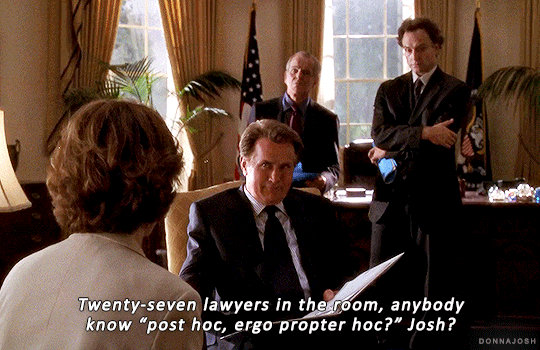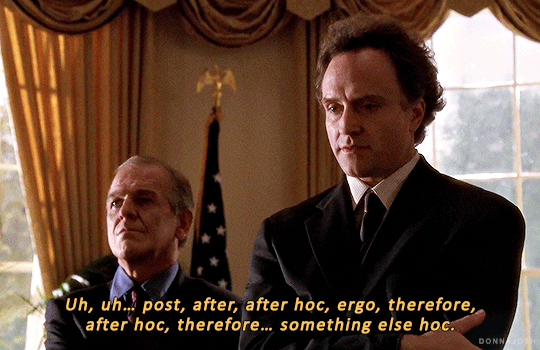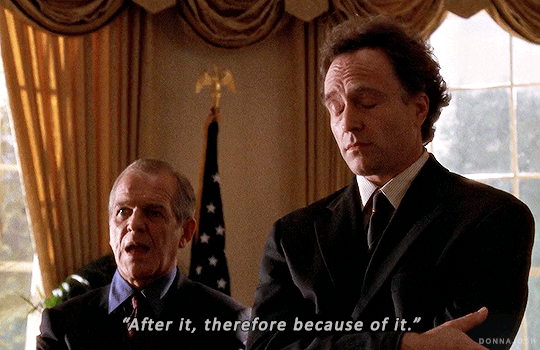The Purpose of Purpose: The Incidental Utility of Brand Purpose
Post hoc ergo propter hoc.
When I was a kid, my mum used to love telling me this story about a study that was done on placebos.
Basically, they had a bunch of people with headaches. Half were given paracetamol with a glass of water, and the other half were given identical-looking sugar pills with a glass of water.
The same headaches went away. What was the moral of the story? Well, they figured that if someone believed they were taking a painkiller, that was as good as taking the paracetamol. The power of suggestion.
But no, that wasn't the end of the story.
It turned out that the cause of the headaches was mostly dehydration. Neither the paracetamol nor the fake pills had anything to do with the pain relief.
It was the glasses of water.
When I first heard about brand archetypes, I was in love. If you're not familiar, the idea is that there are 12 archetypes which tap into a kind of cultural consciousness of storytelling. Things like "The Sage" and "The Caregiver". In theory, they have their origins in Jungian psychology.
By aligning a brand with the right archetype, a marketer can unlock all of the meaning and power latent in the consumers' collective unconscious. For someone like me, with an interest in storytelling, underlying patterns, the symbolism of the Tarot, etc., it was intoxicating.
So I read the book that kicked off this trend – The Hero and the Outlaw. Case study after case study was laid out, showing how successful brands aligned closely with one or another of these archetypes.
Levis consistently presented itself as the Outlaw and succeeded in the market. Google consistently presented itself as the Sage and succeeded in the market. Mercedez-Benz consistently presented itself as the Ruler and succeeded in the market.
But while proponents of brand archetypes attribute this success to the power of these Jungian archetypes, there was something else going on in all of those cases – consistency.
Here's something that's important to realise:
It's more important that a brand is than what a brand is.
The first job of a brand is to exist as a cohesive idea in people's heads. From there, a constellation of associations can be established and reinforced over and over – associations with moments of need, with category-entry points, with points of difference, with points of parity.
And all of those things can be chosen poorly or chosen cleverly, for stronger or weaker competitive effects. They can be executed poorly or well, for stronger or weaker competitive effects.
But it doesn't matter how well chosen those things are or how well they are executed if they cannot be associated with a cohesive idea of the brand.
And given the relatively few and tiny moments in people's lives when we have their attention enough to convey something to them about our brand, there is just no hope without consistency.
From the marketing side of things, with all those associations listed above that we want to convey about the brand, consistency can actually be really challenging. It's conceivable that you could put into market activity which ticks every one of those strategic boxes above over the course of a year, but because each one is being treated in isolation, the coherent brand idea at the centre of them all is lost.
Keeping the brand identity consistent helps a lot – that is, the distinctive brand assets, how the brand looks like itself – but if the brand idea signified by those signatures is inconsistent, it's more difficult for the audience to develop a sense of the brand as an agent, however abstract, behind its products and services.
In The Charisma Myth, Olivia Cabane talks about the thousands of subtle body-language cues which communicate things like warmth and interest when people talk to each other. Her practical advice is that it's basically impossible to try to memorise all of those cues and enact them intentionally to convey warmth or interest – the eye contact, the posture, even things like dilating pupils. So instead, she advises that you actually adopt the mindset/attitude you want to convey and rely on your body's autonomic processes to do the body-language communication subconsciously.
That is – instead of trying to pretend to care, actually care and the body language will do the rest.
For marketers and agencies tasked with conveying a brand, there is a similar practical lesson. Instead of trying to juggle all of the interconnected bits of a brand intentionally to convey a consistent brand idea, have a consistent brand idea in mind as you carry out the activity and you'll naturally end up conveying a cohesive whole.
Here, finally, is a possible practical use for "brand purpose" that sidesteps my criticisms about them often being a bunch of strategish bullshit and customers not actually having the befuckedness to care.
And that is that many articulations of "brand purpose" are very helpful to the marketers and agencies in maintaining and conveying a consistent brand idea. It helps with ensuring that a brand is. It is useful insofar as it is consistently applied, but it is the consistent application that is useful, rather than the content of the "purpose".
To counter Sinek, people don't buy why you do it, but people need an idea of who or what you are before the various actual effective "whys" can attach to anything in their heads. And many articulations of a "why" are very useful to marketers in achieving that.
(Note that I am here talking about the effect of the brand on marketing. The internal usefulness of a "why" for team cohesion and inspiration is a separate matter. In fairness to Sinek, he is big on that too.)
Great anxiety is created by mistaking this incidental utility of a brand purpose for a direct causal precedent. Marketers wring their hands over whether or not their brands have the "right" purpose, agency strategists confidently argue that such-and-such a purpose is better or worse for whatever reasons, when actually almost any purpose would do – so long as it does the job of helping consistently convey the brand idea.
Similarly, if some other tool is doing a sufficient job of helping consistently convey the brand idea (for example, some archetype-based notion), brand purpose is unnecessary. Hell, if some other tool is already doing a sufficient job, adding something else into the mix would only confuse that usefulness.
In other words, marketers dither about which is the right lane, when they actually just need to pick a lane.
So my recommendation to anyone trying to work out what their "brand purpose" should be (as distinct from discovering what the "company purpose" is) is to evaluate a "brand purpose" in terms of its usefulness, not its rightness. That has a lot more to do with the articulation of the brand purpose than its content. In trying to "get brand purpose right", many marketers flap about with vague and poetic language (strategishness) and end up with a sentence that lacks the clarity and single-mindedness necessary to aid consistency.
This is true of anything written in any strategic document ever:
ask what the practical implications and applications of this element are.
How will I or anyone else actually use this?
Compare these two entirely invented brand purposes for an imaginary range of cleaning products:
"To empower the freedom of families of every shape and size to live their best lives in the place they should feel safest."
"To rid the world of grime."
I can imagine either being sold in to execs, a board, a client, but what are we supposed to do with the former? What effect do we expect it to have on the work of creatives ideas and marketers’ decisions? The range of activities that could be informed and justified by this vague loftiness is vast.
Feeling safe... We could partner with a home-security brand.
Families of every shape and size... We could have a float in the pride parade.
Living their best lives... We could offer scholarships to underprivileged kids.
And at the end of all of those activities, does the customer have any clearer idea in their head of who/what this brand is? They probably only noticed one or two of the activities in the first place. Having seen the home-security partnership, what sense is there to them of the float in the pride parade? Having seen the float in the pride parade, what sense is there to them of the scholarships?
And after all of that, we still have actual marketing to do. What needs and category entry points are we associating the brand with? What are its points of difference? Which points of parity are we driving to neutralise competitor points of difference? What user and usage imagery do we need to convey?
Regardless, no one bought the brand to nobly empower the freedom of families to live their best lives and no one bought the brand to rid the world of grime. They bought the brand because it seemed best or good enough for what they needed it to do – but they could only recognise and remember that if there was consistency in how they’d been told.
So, what are some of the implications if the above hypothesis is accurate?
It’s an argument for “company purpose” (if there is such a thing) being used as the brand purpose, because it is consistent over time by definition.
It’s an argument for keeping an existing brand purpose unchanged, BUT it’s also an argument for updating the articulation of a brand purpose if it is not fit for purpose (pun intended) as an aid to communicating a consistent brand idea.
A usefully articulated brand purpose is sufficient but not necessary for aiding the communication of a consistent brand idea, and so…
It’s an argument for not adding a brand purpose if there is already some brand element or elements which are sufficient for aiding conveying a consistent brand idea.
There is still more to investigate, however.
Many definitions or explanations of “brand purpose” are connected to the idea of a brand/company doing good in the world. What is the relationship between brand purpose, doing good, and corporate social responsibility?
Is any single element of a brand strategy sufficient for directing the communication of a coherent brand idea, or are several elements required, or are a multitude a hindrance to single-mindedness?
And what is the brand purpose of the fabulously successful Compare the Market brand?




